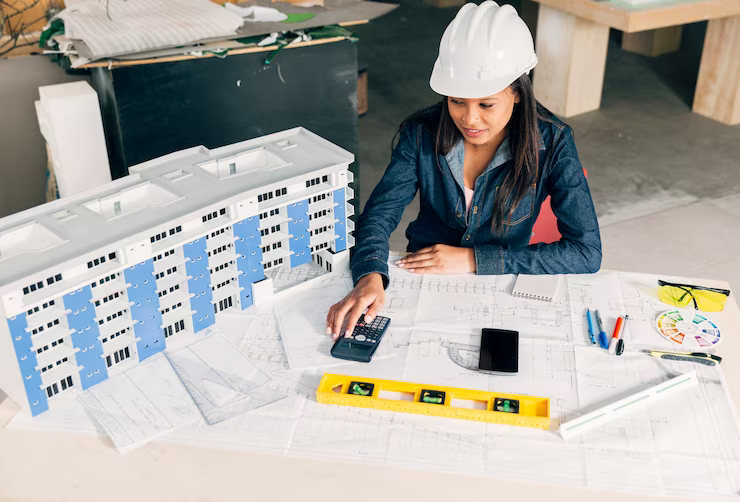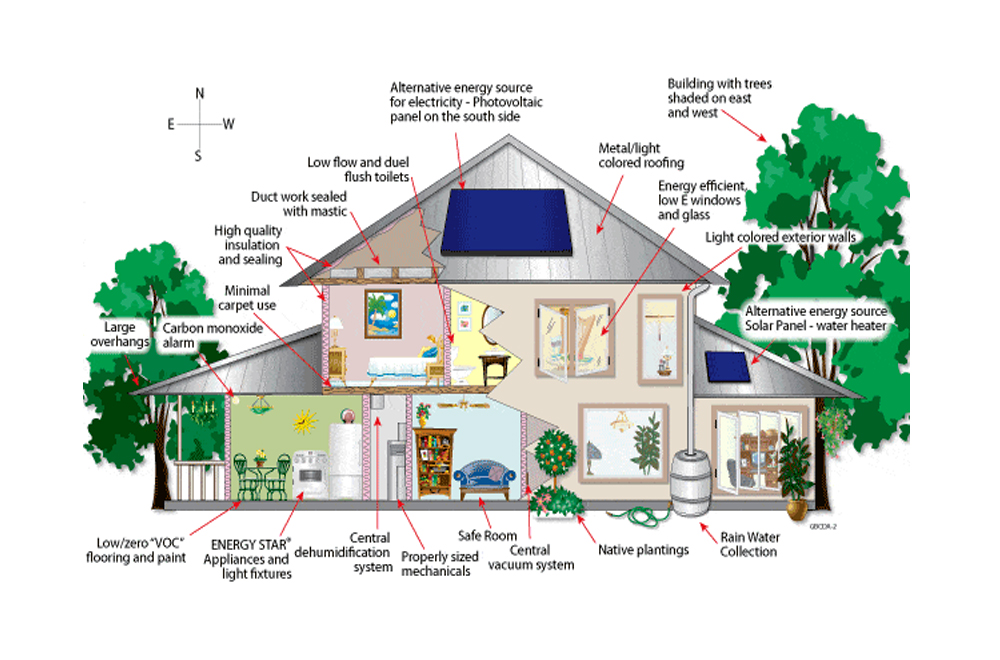Whether you’re trying to determine the feasibility of a construction project or looking to bid on the job, estimating how much it will cost is critical. After all, a commercial project owner needs to be certain that the proposed construction will be profitable, and a residential project needs to be affordable. In the middle of these, multifamily housing has to make a profit, too. No matter the project type, getting an estimate is critical before any work can begin. It is, however, a relatively complicated process. Here, we’re going to talk about the most detailed type, the bid estimate. We’ll also look at how they are prepared.

Table of Contents
ToggleWhat Goes into Construction Cost Estimate
First, let’s look at the types of information needed for these estimates. In order to be accurate, a bid estimate must include as many actual or potential costs as possible. At the same time, it’s necessary to account for the unexpected, at least to some extent. Ideally, an estimate will provide the contractor with an adequate profit yet avoid overcharging the customer.
Materials costs
When preparing an estimate for bidding, the first thing contractors need to consider is the cost of materials. Every piece of a project, from the individual screws or rolls of painter’s tape, all the way to huge steel beams, has a cost. In the case of materials cost estimating, we’re only considering the price paid for materials. It doesn’t count the cost of installing or using them.
Labor Costs-Wages
Next, contractors will consider labor costs. This is the amount of money which a contractor will pay the crew which actually performs the work. In construction, most employees are paid by the hour. However, not every worker makes the same amount of money. For example, a worker who can operate certain kinds of equipment might be paid more than someone who installs siding. In addition, a more experienced Journeyman makes more than a laborer in the same field. These pay differentials can vary based on location and labor market conditions.
Labor Costs-Burden
In addition to base wages for construction workers is the “labor burden.” This includes all the costs involved with keeping this person employed, such as workman’s compensation, payroll taxes, and voluntary benefits. Labor burdens often are a large percentage of payroll, but it varies significantly. Some contractors choose to offer health insurance, while others don’t. In addition, expenses such as workman’s compensation are assessed differently based on both location and contractor specialty.
Equipment Costs
Next there are equipment costs. While smaller construction projects like building a shed might not use a lot of heavy machinery, others are more complicated. For instance, digging the foundation for a high rise apartment building will require heavy excavating equipment. This is an expensive item, and it’ll typically be priced in separately from your basic “materials.” Finally, equipment costs can include rentals when something isn’t needed often.
Permits and Insurance
Here, we’re talking about something a little different: paperwork for the project. With the exception of small projects, the majority of projects will require a building permit. There might also be occupancy certificate fees, inspections, surveying, and many other miscellaneous costs. Such expenses vary widely depending on the size and nature of the project, as well as the location of it.
For instance, a shopping mall being built inside city limits is typically going to require more paperwork than the same thing out in the country. On the other hand, permits for single-family homes in one location may well be cheaper than what they’d charge for an apartment house. Besides this, the apartments might require traffic studies and other expensive extras. Most contractors pay these expenses and then bill the client for those expenses.
Another thing that contractors might need to include is the price of surety bonds and other insurance products. Some of these depend on client preferences, such as the desire for a performance bond. Other expenses of this type might involve the added compliance costs associated with government or nonprofit work. All of these costs need to be added up and included to achieve an accurate estimate.
Administrative Overhead
Next, there’s the administrative overhead. All contractors have some expenses related to the upkeep of their business, such as hiring an estimator or bookkeeper, the rent or mortgage on an office, and utilities. Because a specific project isn’t going to account for all of these expenses, the administrative costs are typically divided up. This way, all the projects are paying for the expenses collectively.
Contingencies
No matter how well-run a project might be, the unexpected can always happen. For instance, a major storm might move into the area and require the crews to stop for a few days. Or worse, the storm could destroy some of the work, resulting in some steps being repeated. Other problems can also arise, such as a backorder on supplies, staff illness, and rising prices. All of these possibilities need to be thought of, and accounted for.
Subcontractor fees
Sometimes it is necessary for general contractors to hire a subcontractor. This is more common with items such as excavation, plumbing, and electrical, but there are other possibilities. In this case, general contractors will give clients an estimate of how much the subs fee should be.
Markup
Finally, as contractors it’s necessary to add markup to our estimates. In brief, this is the money which accounts for profit after all expenses have been paid. Most contractors will add this along the way, so that if there are changes the business will still profit.
How An Estimate is Made in Construction
Now that we understand what to put into an estimate, it’s time to look at how each item is calculated. Generally speaking, construction estimating is a time-consuming process that accounts for everything.
Materials
Materials costs are calculated using two basic steps. First, a complete inventory is taken of what materials the contractor will need to complete the job. This is done using the blueprints or other project specifications as provided. In more detailed estimates, each screw and beam is counted individually. Other situations may call for estimating these materials based on assembly costs or by the square foot. The scope of a project, as well as the degree to which plans are set in stone, will usually determine this.
Labor
In this case, we’re going to talk about the labor burden and the wages together. The first step is to estimate the number of hours it will take to complete a job, taking into account the typical rate at which a crew gets things done. In addition, the estimator will count the number of people required for the work crew, and average their hourly pay. Finally, the labor burden for each man hour will be added to the total, yielding a labor cost estimate.
Equipment costs
To get an accurate cost estimate, the estimator needs to determine what equipment will be used to complete the project. Each piece of equipment has a cost associated with it, such as saw blades, maintenance, and fuel. If the item is financed or rented, these costs will also need to be included.
Permits and insurance
Relative to many other construction costs, this one is simple. Certain fees, such as the building permit costs, will be relatively easy to determine. If the contractor regularly works in a certain jurisdiction, they probably already are aware of what a building permit will cost. Otherwise, a quick call or look online will get them an answer.
Insurance and bonds can be a little bit more complicated. Some insurance types will be paid monthly on a company’s operations, with a percentage of this being added to the estimate. On the other hand, a performance bond will be priced separately. Pricing can usually be determined by an insurance agent.
Administrative Overhead
Unless the contractor needs to hire extra personnel or purchase more outsourced labor than usual, administrative overhead is easy to estimate. Most contractors have set expenses which are common to the office, and which can be passed on to the clients in proportion to the amount of work they require. To make this easier, let’s assume that a job will be half of the output in a given month, with other projects consuming 25% each. To estimate that larger job’s administrative costs, those overhead items will be cut in half.
Contingencies
In many cases, contingencies will be a percentage of the overall total. This compensates for the fact that construction projects routinely go over budget to a certain extent, and it protects both parties. However, there might be extra contingency money added in certain situations, such as hurricane season, when there’s more risk.
Subcontractor fees
To add these to an estimate, you’ll simply get a quote from the intended subcontractor. Then, you’ll add your markup and total it with other expenses.
Adding it up
Finally, to make a construction estimate a contractor will add up all of these lines. If done properly, the estimate should be very accurate. Typically, if it’s done to this level of specificity then the project is ready to bid.






